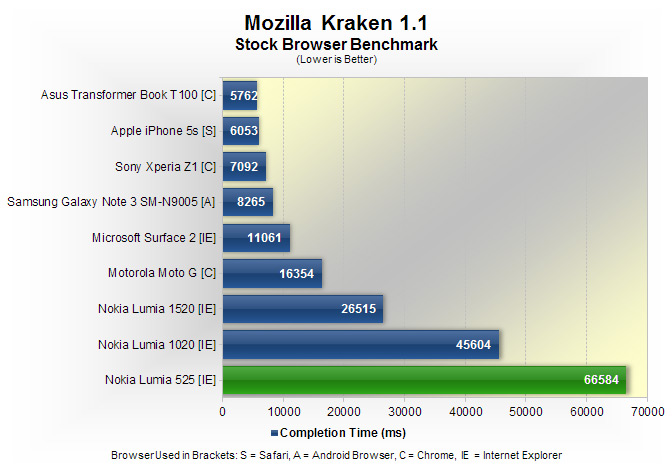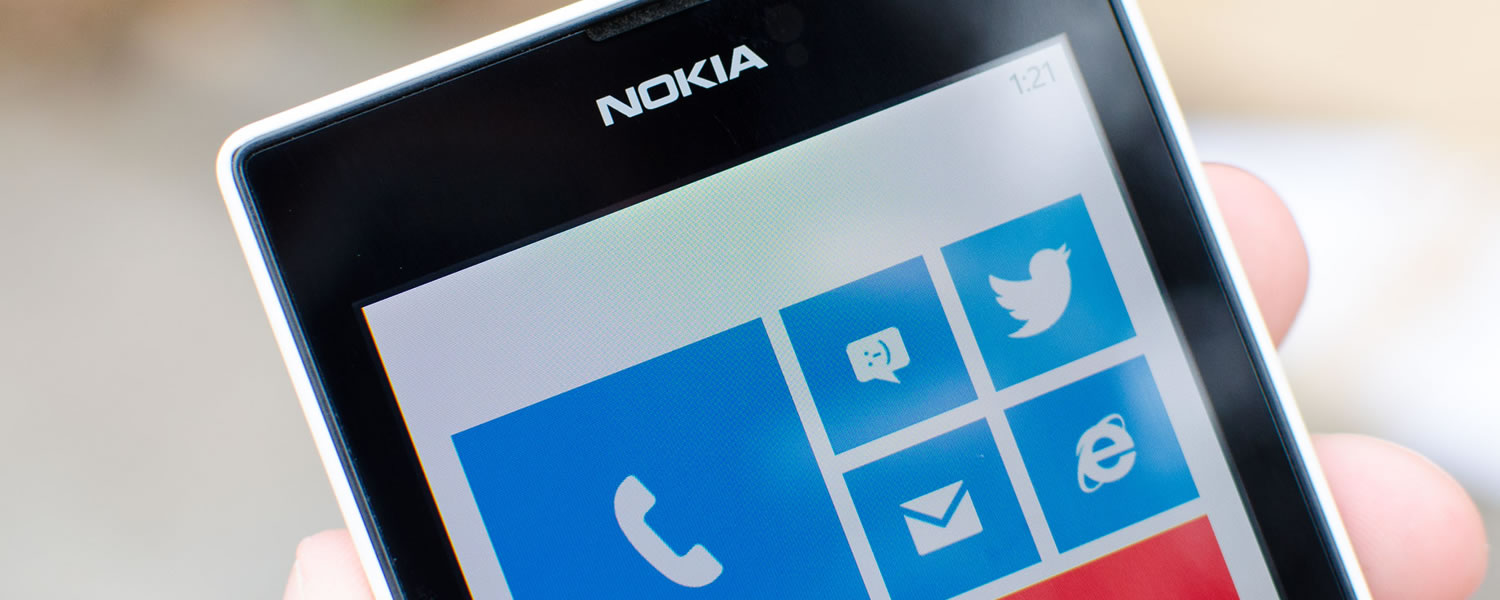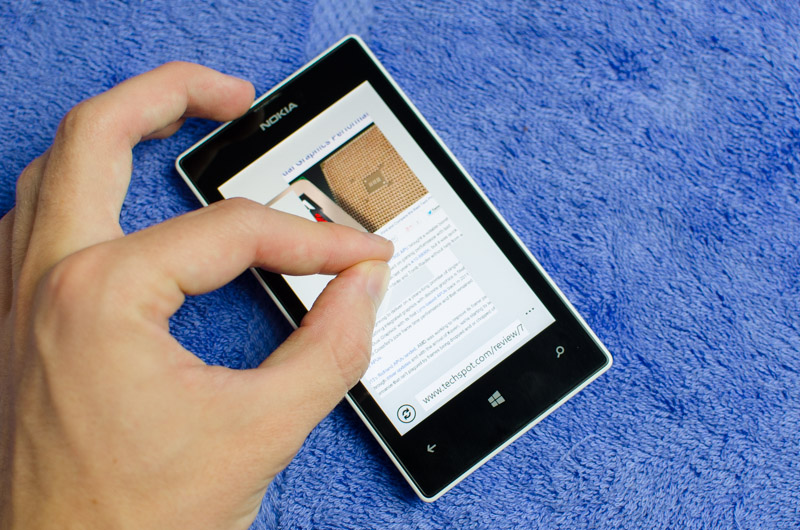Performance
Inside the Nokia Lumia 525 we're getting the exact same SoC Nokia used for the Lumia 520, which isn't an ideal situation. The Qualcomm Snapdragon S4 MSM8227 was first seen in devices at the end of 2012, and has already been superseded twice, first by the Snapdragon 400 used throughout 2013's mid-to-low-range handsets, and then again by the recently-announced Snapdragon 410.
While the Snapdragon 410 is still in the sampling stage, it seems odd that Nokia would continue to use the year-old MSM8227 over a Snapdragon 400. The choice makes the Lumia 525's hardware immediately outdated at launch, and comparatively weak up against competitors' offerings.
The Qualcomm Snapdragon S4 MSM8227 SoC is built on a 28nm LP process and features a 1.0 GHz dual-core Krait CPU, 1 MB of L2 cache, an Adreno 305 GPU, a Hexagon QDSP6 DSP at 500 MHz, a single-channel LPDDR2 memory controller, plus Bluetooth 4.0, Wi-Fi 802.11 b/g/n, A-GPS and HSPA+ radios. The MSM8227 is paired with 1 GB of RAM in the Lumia 525, which is one of the only upgrades that has been made over the Lumia 520, which included just 512 MB.
There's also 8 GB of storage inside the Lumia 525, which isn't a huge amount. Of the 8 GB (actually 7.23 GB), 2.39 GB is occupied by the OS and related system files, leaving just 4.84 GB free to the user. While there is a microSD card slot underneath the back cover, which supports cards up to 64 GB in size, all apps must be installed on the internal storage. This can put a bit of pressure on the limited available space, especially if you want to install a few games.
Navigating the operating system is a generally smooth experience on the Lumia 525, thanks to hardware acceleration efforts that see the GPU well utilized. Opening apps isn't exactly speedy, sometimes taking several seconds to get to a usable screen, but the handset doesn't suffer from deathly slowness. 1 GB of RAM appears to help multitasking, as I found that a larger number of apps can be quickly resumed on the Lumia 525 compared to the Lumia 520.
Browsing performance from the 1.0 GHz dual-core processor is particularly weak compared to other entry-level smartphones in 2014. Webpages on the Lumia 525 simply can't be manipulated as quickly, and Internet Explorer likes to throw up a lot of checkerboarding, especially when you scroll up and down long pages. Web browsing is an area where the Lumia 525 would really benefit from the stronger CPU cores in the Snapdragon 400.
The graphics processor inside the MSM8227 isn't the fastest going around, but thanks to the Lumia 525's low display resolution it's capable of playing games available through the Windows Phone Store. Titles such as Grand Theft Auto: San Andreas are actually playable on the Lumia 525, helped by 1 GB of RAM, though not as smoothly as you'll find on flagships like the Lumia 1520.



As you can see from the in-browser benchmarks that I ran on the Lumia 525, both the browser performance and the CPU performance falls far behind other devices. In Kraken especially you can see that a modern flagship SoC like the Apple A7 is around ten times faster than the MSM8227.

The Adreno 305 GPU in the MSM8227 is the same GPU Qualcomm uses in the Snapdragon 400, however the T-Rex HD benchmark from GFXBench indicates it may be running at a lower clockspeed. Comparing on-screen results of the Lumia 525 (WVGA) to the Moto G (720p), the Moto G was 15% faster despite having to render to 140% more pixels. Of course some of this is likely related to the weaker CPU cores, among other things.

Unfortunately the video decoding capabilities of the Lumia 525 are capped at 720p; the Snapdragon S4 SoC is simply not powerful enough to decode 1080p content, and if you try you'll be left with extremely choppy playback. Luckily the audio produced from the 3.5mm audio jack is decent, and I still love the wide range of volumes you can choose in Windows Phone, which provides quite a lot of room for amplification.
The MSM8227 SoC in the Nokia Lumia 525 provides enough oomph for low-intensity tasks, but falls behind in app loading and web browsing. I'm not a fan of how Nokia has used a year-old chip in a device marketed as being brand new, especially when there are better, newer alternatives available. That's not to say the performance is bad, but I expect more from today's entry-level smartphone.

